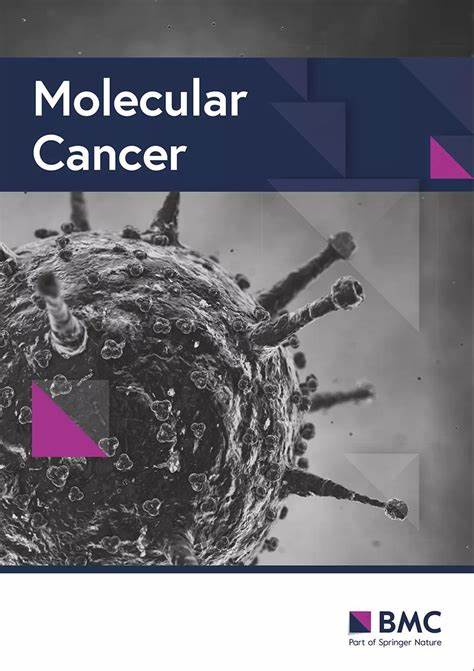Glioblastoma multiforme: insights into pathogenesis, key signaling pathways, and therapeutic strategies
IF 27.7
1区 医学
Q1 BIOCHEMISTRY & MOLECULAR BIOLOGY
引用次数: 0
Abstract
Glioblastoma multiforme (GBM) is the most prevalent and aggressive primary brain tumor in adults, characterized by a poor prognosis and significant resistance to existing treatments. Despite progress in therapeutic strategies, the median overall survival remains approximately 15 months. A hallmark of GBM is its intricate molecular profile, driven by disruptions in multiple signaling pathways, including PI3K/AKT/mTOR, Wnt, NF-κB, and TGF-β, critical to tumor growth, invasion, and treatment resistance. This review examines the epidemiology, molecular mechanisms, and therapeutic prospects of targeting these pathways in GBM, highlighting recent insights into pathway interactions and discovering new therapeutic targets to improve patient outcomes.多形性胶质母细胞瘤:对发病机制、关键信号通路和治疗策略的见解
多形性胶质母细胞瘤(GBM)是成人中最常见和侵袭性最强的原发性脑肿瘤,其特点是预后差,对现有治疗有明显的耐药性。尽管治疗策略取得了进展,但中位总生存期仍约为15个月。GBM的一个特点是其复杂的分子特征,由多种信号通路的中断驱动,包括PI3K/AKT/mTOR、Wnt、NF-κB和TGF-β,这些信号通路对肿瘤生长、侵袭和治疗耐药性至关重要。本文综述了GBM的流行病学、分子机制和靶向这些通路的治疗前景,重点介绍了通路相互作用的最新见解,并发现了新的治疗靶点,以改善患者的预后。
本文章由计算机程序翻译,如有差异,请以英文原文为准。
求助全文
约1分钟内获得全文
求助全文
来源期刊

Molecular Cancer
医学-生化与分子生物学
CiteScore
54.90
自引率
2.70%
发文量
224
审稿时长
2 months
期刊介绍:
Molecular Cancer is a platform that encourages the exchange of ideas and discoveries in the field of cancer research, particularly focusing on the molecular aspects. Our goal is to facilitate discussions and provide insights into various areas of cancer and related biomedical science. We welcome articles from basic, translational, and clinical research that contribute to the advancement of understanding, prevention, diagnosis, and treatment of cancer.
The scope of topics covered in Molecular Cancer is diverse and inclusive. These include, but are not limited to, cell and tumor biology, angiogenesis, utilizing animal models, understanding metastasis, exploring cancer antigens and the immune response, investigating cellular signaling and molecular biology, examining epidemiology, genetic and molecular profiling of cancer, identifying molecular targets, studying cancer stem cells, exploring DNA damage and repair mechanisms, analyzing cell cycle regulation, investigating apoptosis, exploring molecular virology, and evaluating vaccine and antibody-based cancer therapies.
Molecular Cancer serves as an important platform for sharing exciting discoveries in cancer-related research. It offers an unparalleled opportunity to communicate information to both specialists and the general public. The online presence of Molecular Cancer enables immediate publication of accepted articles and facilitates the presentation of large datasets and supplementary information. This ensures that new research is efficiently and rapidly disseminated to the scientific community.
 求助内容:
求助内容: 应助结果提醒方式:
应助结果提醒方式:


